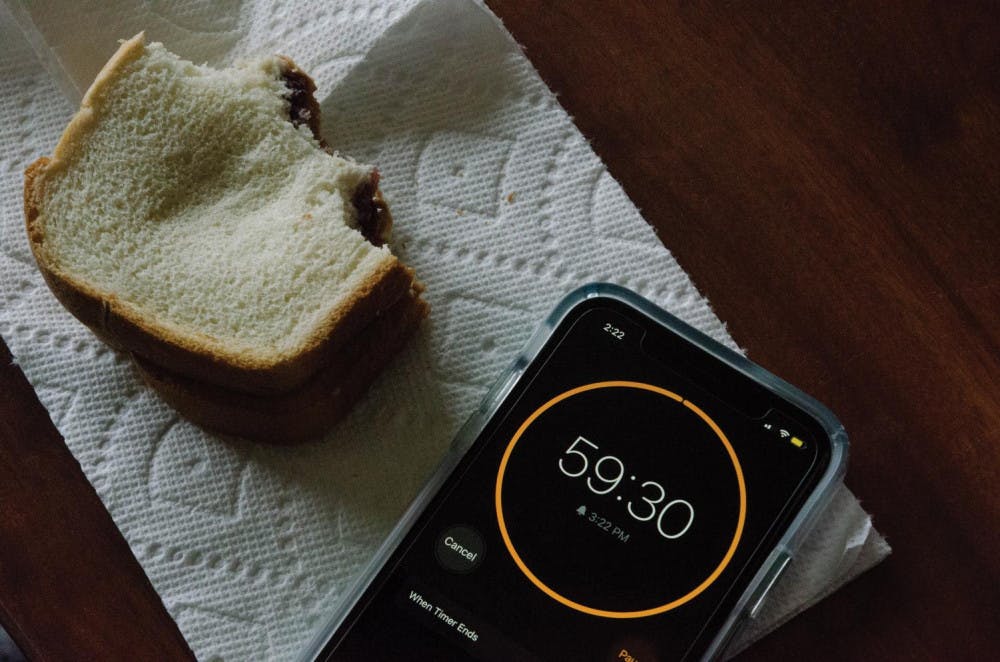Intermittent fasting is a recent trend in the health and fitness circles that focuses on changing one’s eating patterns in some way in order to promote weight loss. One of the most well-known and popular methods is restricting yourself to only eating in a certain period of time, such as between 1 p.m. and 9 p.m. Other methods include fasting for 24 hours twice a week or consuming only 500 to 600 calories on two separate days while eating normally for the rest of the week.
When I first started, my knowledge of fasting was solely in a religious or spiritual context. Once I learned what intermittent fasting was, I thought that it would be a fun experiment for a few days, but had my reservations about doing it on a more long-term basis.
As a general rule, I try to avoid diets or eating patterns that aim specifically at losing weight because of my own personal issues with how people approach weight and weight loss. Long-term intermittent fasting seemed like it was something that could be easily twisted into an attempt to be healthier to very rarely eating at all. Despite that, I’d already pledged to try and be healthier this year, especially in working towards a diet that wasn’t solely Chick-fil-A.
I chose to focus on restricting my meals to a time span, specifically from 1 p.m. to 9 p.m. I first started on a Thursday and ended that following Saturday to see if there was any big difference when I resumed my typical diet. Beyond that, it was just a matter of going about my daily life and hoping for the best.
Most days, I eat before my classes because they’re all back to back, but my Thursday classes began at 9:25 a.m. and didn’t end until 1:30 p.m. By 11 a.m., my stomach was growling in class and I was pretending it wasn’t me. My last class, however, ended early and I was able to fit in a 20-minute lunch at Chick-fil-A before work. I was too busy to eat again before work, and since my shift lasted until 9 p.m., that ended up being my only meal that day.
A similar incident occurred Friday, where I toted a Chick-fil-A bag with me to an interview because I hadn’t had time to get food beforehand. (Luckily, my interviewee did not mind.) On Saturday, I ate lunch before work and didn’t eat anything else until I finally broke the fast by eating two bowls of macaroni and cheese at 11 p.m.
The biggest thing I noticed about intermittent fasting is that I was always hungry to the point where my stomach was growling for most of my classes. When I finally did eat, I always ate a lot more food than I would have otherwise, but ended up hungry again later. Throughout, I felt a lot more stressed about food and thought about it far more than I typically do. It was a struggle to really be able to fit in something as necessary as eating into my schedule because I was so restricted.
Part of my issue with intermittent fasting may simply be that my schedule isn’t the best fit for it. Most of my classes, work shifts, and extra-curricular activities are planned back to back so that my break times are longer, but that meant that the majority of the 1 p.m. to 9 p.m. block was already filled with either classes or work, without even considering things like studying, naps or workouts.
When I finally had the spare minute to go eat, I was typically aware that I would most likely be unable to eat again that day, so I tried to eat more so I wouldn’t be hungry later. That ultimately didn’t work and is the reason I spent my Saturday night eating microwavable macaroni and cheese.
In regards to other people intermittent fasting as a health and fitness trend, I have to admit that I’m not a fan. Regardless of my own experience with it, the premise of it is that someone restricts their eating in odd ways to try to be “healthier.” With over thirty million Americans suffering from eating disorders and the worth of the weight loss industry resting at seventy-two billion dollars, even after the recent body positivity movement, it concerns me that this is another unhealthy fad masquerading as a legitimate way to be healthier.
That being said, if it’s an effective way of eating for someone else and they’re not doing it in an unhealthy manner, then I see no reason they shouldn’t do it. Intermittent fasting is similar to what people already do between meals; it’s just on a slightly longer time scale. As for me, I still think that it might be interesting to try it again in the future in a different way, whether it be through a different method or a different time period. Currently, however, I’m happy that I get to eat breakfast again.
I tried intermittent fasting for three days





